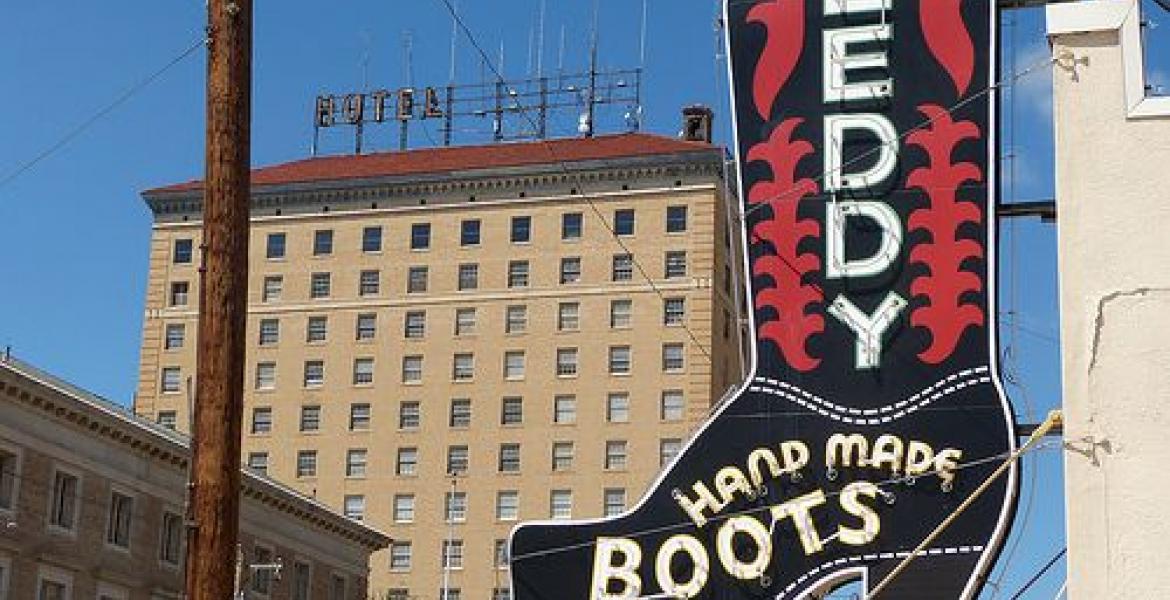In the state of Texas, the first thing you learn about water is that there isn’t any. As San Angelo moves toward drought level three, water concerns become alarmingly worrisome. But these worries extend beyond anxiety about future drinking resources, they also encroach on the way we do business.
Texas is home to the world’s largest injection well program, with approximately 27,000 active injection wells by June of this year. As rigs go up and small towns populate, the demand for necessary resources also rises.
It is estimated that a typical injection well requires circa 5 million gallons of water—most of which is fresh—to completion. And in the state of Texas alone, the oil and gas industry disposes of approximately 6 billion barrels of produced water annually.
That’s a lot of water. And frankly, it has some west Texas residents worried.
“What we’re concerned about is that we don’t have enough [water],” an anonymous state official and San Angelo resident said. ‘People think that when you draw groundwater that it doesn’t affect the surface, but it does. Our rivers, lakes and streams are drying up. It has a big impact,’ our source said.
According to the website for FracFocus, the national hydraulic fracturing chemical registry, ‘the majority of water used in injection wells is sourced from surface water, such as lakes, rivers and municipal supplies. Groundwater is also used to supplement surface supplies where sufficient quantities are available.’
The equation seems simple on the surface: San Angelo is experiencing a severe water shortage and the oil industry intends to suck us dry. We can all bathe in frac water and set our sinks on fire!
But Texas Water Recycling Association President John James Tintera doesn’t think that ‘frac’ is San Angelo’s new four-letter word.
“The eyes of the world are on Texas,” Tintera said as he began a presentation on Sept. 11 at the Desks and Derricks Club meeting at Bentwood Country Club. “What you do here in San Angelo matters…”
Tintera, a licensed geologist and former Executive Director of the Texas Railroad Commission, had come to San Angelo to give a presentation on ‘Texas oil and gas and the whole wide world’. The presentation touched on many aspects of the industry as pertains to our state in a global perspective, as well as on water usage, recycling and disposal.
In a later telephone interview, Tintera spoke of the use of water by the oil and gas industry relative to other industries.
“Freshwater is commonly used in hydro-fracturing. The estimate that I’ve heard is that for all the industrial uses of water, the oil and gas industry in total uses about two percent… The vast majority of water—I think it’s 40 percent or so—is used by agriculture,” Tintera said.
According to Tintera, the thing to remember about water usage in Texas is that “…water is owned privately, and the surface owners own the water. So if you own a piece of property—even if you don’t own the minerals you still own the fresh water.”
This means that the owner of property containing surface or groundwater may sell mine and sell the water that’s on his property, but owning a piece of land in the state of Texas does not make it a free-for-all.
Interim Assistant Water Utilities Director for the City of San Angelo Kevin Krueger said, “The lakes and the rivers, you’re not allowed to draw from those unless you have a water right. And even if you have a water right, there’s a Water Master in this area, and you’re required to report to them prior to withdrawing, and make them aware of the amount of water you’re going to be removing.”
Krueger admits that there will likely always be people who will abuse their water privileges by following the proper channels to do things legally, but emphasizes that these are things the City of San Angelo and the Water Master look out for.
As far as permitting municipal water supplies to be used by outside entities goes, it’s a matter of local politics.
“Cities usually lease those water rights so that they can have them for future use,” Tintera says.
However, “Any water that leaves the city limits, that process has to be approved by the City Council,” Krueger said. “The water that the city produces for our distribution system is really only to be consumed within the city limits.”
San Angelo currently sells water to a small number of subdivisions outside city limits, however hasn’t signed any agreements in the past five or so years, Krueger said. “The councils have been fairly consistent in denying requests to make sales outside of city limits,” he added.
As the population of injection wells on the perimeter of San Angelo moves forward, however we may see a higher demand in our natural resources. Members of the council may be speaking more on water than they have before.
Subscribe to the LIVE! Daily
Required






Comments
Listed By: Justsayin !
- Log in or register to post comments
PermalinkListed By: Chelsea Reinhard
Thank you for your insightful comment. We're having trouble finding pictures to represent frac'ing, so we put this one up. The statement from FracFocus is paraphrased directly from their website.
I appreciate your input and admit I'm no frac'ing expert (the bit about frac'ing versus injection wells is still a bit hazy for me, and that number is what I gleaned from google and several websites about frac'ing and the oil industry--I was under the impression that the two terms are used interchangeably), but the essence of the article is to highlight water issues and how these extend to the business sector, specifically the oil industry.
- Log in or register to post comments
PermalinkPost a comment to this article here: